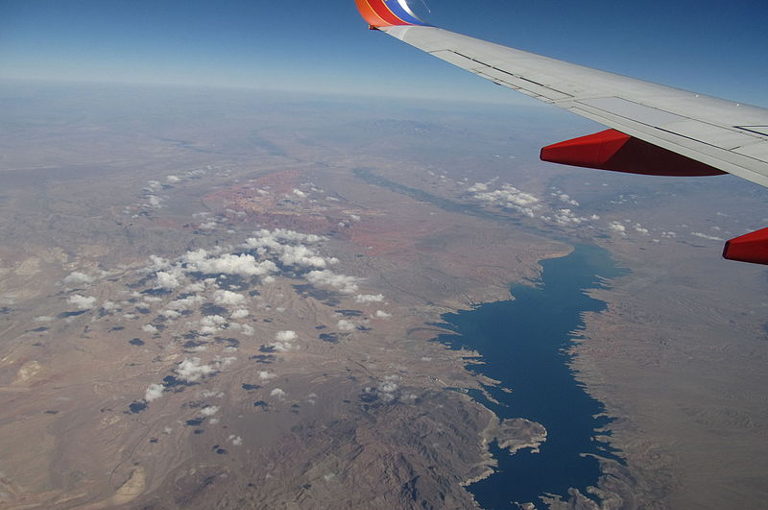The American West is having a drought. So, what else is new? And, that’s just the point. The American West has been in an extended drought since 2000, so far the second worst in the last 1200 years. Here is the key quote from the National Geographic article cited above:
In the face of continued climate change, some scientists and others have suggested that using the word “drought” for what’s happening now might no longer be appropriate, because it implies that the water shortages may end. Instead, we might be seeing a fundamental, long-term shift in water availability all over the West.
That is what climate scientists have been warning about all along. The problems we are now experiencing are not just cycles or fluctuations—although those continue to be important—but rather, permanent changes in the climate (that is, on any timeline that matters to humans).
I wrote about this drought when it was only 10 years old. (For a sense of how bad it is now, see the U.S. Drought Monitor.) Back then it did not seem that residents and businesses were taking it seriously, even if some water officials were. There have been ups and downs in the intervening years, but mostly downs.
There is a reason that most major cities are located near water and not in arid regions. Water is heavy, fluid and not easily transported—though vast and expensive water projects do just that. Water cannot be easily created from its constituents elements, oxygen and hydrogen. Oxygen is abundant everywhere on Earth. But hydrogen in its elemental state is not readily available and must be extracted from other sources such as natural gas. The cost of manufacturing water is prohibative or we’d likely be doing it already.
That leaves society with two paths: Bring ever greater amounts of water to arid regions which continue to grow in population and water-intensive activities such as farming OR conserve dramatically in order to live within the available water supply.
The second choice appears imminent as water authorities across several states are preparing to activate a drought response plan this summer when Lake Mead (the lake behind Hoover Dam) is expected to reach a level that triggers the plan. All those receiving water from the Colorado River and its tributaries are likely to be affected. Again, a look at the U.S. Drought Monitor demonstrates that the drought extends far beyond the Colorado River basin, west to much of California, east into New Mexico and West Texas and north into parts of Oregon.
There is a third path which I haven’t mentioned because in polite company and official circles it is unmentionable: People could leave. And, they may do so as the costs and consequences of living with less water mount—especially for those in water-intensive pursuits such as agriculture. Those in the cities may leave, too, as the cost of provisioning water for urban areas rises and supplies are curtailed. That would, of course, hit water-intensive businesses and their employees the hardest.
All of this was prophesied long ago by Marc Reisner, author of Cadillac Desert, the acknowledged classic treatment of water in the American West. The subtitle of the book is “The American West and Its Disappearing Water.”
Of course, the boosters of growth in the West will tell us that these things are cyclical and that soon the rains will return. But, the West has been waiting for over 20 years. Unfortunately, a positive mental attitude does not trump the physics of climate change—which, in this case, has been combined with a return to what the historical and geological record show is far closer to the norm in the West.
That does not bode well for a people and a culture used to getting its way with nature—something, it turns out, that was really just luck, the luck of having populated and reconfigured the West in a period that was particularly wet in relation to the millennium that preceded it.
Photo: Aerial view of Lake Mead, the largest reservoir in the United States in maximum water capacity. By Ken Lund (2012) via Wikimedia Commons https://commons.wikimedia.org/wiki/File:Lake_Mead,_Nevada_(7981495537).jpg.
“It is located on the Colorado River about 24 mi (39 km) from the Strip southeast of Las Vegas, Nevada, in the states of Nevada and Arizona. Formed by the Hoover Dam, Lake Mead is impressive: 112 miles (180 km) long when the lake is full, 550 miles (890 km) of shoreline, around 500 feet at greatest depth, 247 square miles (640 km2) of surface, and when filled to capacity, 28 million acre-feet of water. However, the lake has not reached this capacity in more than a decade, due to increasing droughts. “






